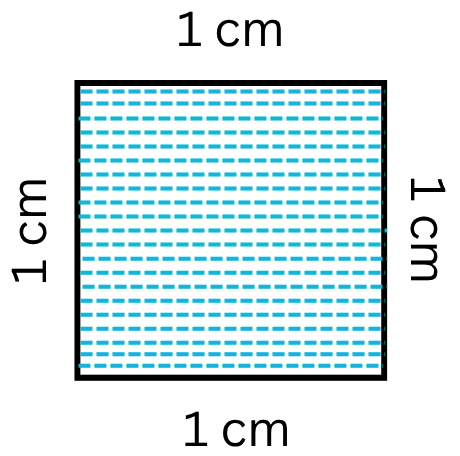Subscribe to our ▶️YouTube channel🔴 for the latest videos, updates, and tips.
Home | About Us | Contact Us | Privacy | Math Blog
General Equation of Second Degree Represents a Circle
We will learn how the general equation of second degree represents a circle.
General second degree equation in x and y is
ax2 + 2hxy + by2 + 2gx + 2fy + C = 0, where a, h, b, g, f and c are constants.
If a = b(≠ 0 ) and h = 0, then the above equation becomes
ax2 + ay2 + 2gx + 2fy + c = 0
⇒ x2 + y2 + 2 ∙ ga x + 2 ∙ fa y + ca = 0, (Since, a ≠ 0)
⇒ x2 + 2 ∙ x ∙ ga + g2a2 + y2 + 2.y .fa + f2a2 = g2a2 + f2a2 - ca
⇒ (x + ga)2 + (y + fa)2 = (1a√g2+f2−ca)2
Which represents the
equation of a circle having centre at (-ga, -fa) and radius = 1a√g2+f2−ca
Therefore, the general second degree equation in x and y represents a circle if coefficient of x2 (i.e., a) = coefficient of y2 (i.e., b) and coefficient of xy (i.e., h) = 0.
Note: On comparing the general equation x2 + y2 + 2gx + 2fy + c = 0 of a circle with the general equation of second degree ax2 + 2hxy + by2 + 2gx + 2fy + C = 0 we find that it represents a circle if a = b i.e., coefficient of x2 = coefficient of y2 and h = 0 i.e., coefficient of xy.
The equation ax2 + ay2 + 2gx + 2fy + c = 0, a ≠ 0 also represents a circle.
This equation can be written as
x2 + y2 + 2gax + 2fay + ca = 0
The coordinates of the centre are (-ga, -fa) and radius 1a√g2+f2−ca.
Special features of the general equation ax2 + 2hxy + by2 + 2gx + 2fy + C = 0 of the circle are:
(i) It is a quadratic equation in both x and y.
(ii) Coefficient of x2 = Coefficient of y2. In solving problems it is advisable to keep the coefficient of x2 and y2 unity.
(iii) There is no term containing xy i.e., the coefficient of xy is zero.
(iv) It contains three arbitrary constants viz. g, f and c.
● The Circle
- Definition of Circle
- Equation of a Circle
- General Form of the Equation of a Circle
- General Equation of Second Degree Represents a Circle
- Centre of the Circle Coincides with the Origin
- Circle Passes through the Origin
- Circle Touches x-axis
- Circle Touches y-axis
- Circle Touches both x-axis and y-axis
- Centre of the Circle on x-axis
- Centre of the Circle on y-axis
- Circle Passes through the Origin and Centre Lies on x-axis
- Circle Passes through the Origin and Centre Lies on y-axis
- Equation of a Circle when Line Segment Joining Two Given Points is a Diameter
- Equations of Concentric Circles
- Circle Passing Through Three Given Points
- Circle Through the Intersection of Two Circles
- Equation of the Common Chord of Two Circles
- Position of a Point with Respect to a Circle
- Intercepts on the Axes made by a Circle
- Circle Formulae
- Problems on Circle
11 and 12 Grade Math
From General Equation of Second Degree Represents a Circle to HOME PAGE
Didn't find what you were looking for? Or want to know more information about Math Only Math. Use this Google Search to find what you need.
Recent Articles
-
Volume of a Cube | How to Calculate the Volume of a Cube? | Examples
Jul 22, 25 03:02 PM
A cube is a solid box whose every surface is a square of same area. Take an empty box with open top in the shape of a cube whose each edge is 2 cm. Now fit cubes of edges 1 cm in it. From the figure i… -
Volume of a Cuboid | Volume of Cuboid Formula | How to Find the Volume
Jul 20, 25 12:58 PM
Cuboid is a solid box whose every surface is a rectangle of same area or different areas. A cuboid will have a length, breadth and height. Hence we can conclude that volume is 3 dimensional. To measur… -
5th Grade Volume | Units of Volume | Measurement of Volume|Cubic Units
Jul 20, 25 10:22 AM
Volume is the amount of space enclosed by an object or shape, how much 3-dimensional space (length, height, and width) it occupies. A flat shape like triangle, square and rectangle occupies surface on… -
Worksheet on Area of a Square and Rectangle | Area of Squares & Rectan
Jul 19, 25 05:00 AM
We will practice the questions given in the worksheet on area of a square and rectangle. We know the amount of surface that a plane figure covers is called its area. 1. Find the area of the square len… -
Area of Rectangle Square and Triangle | Formulas| Area of Plane Shapes
Jul 18, 25 10:38 AM
Area of a closed plane figure is the amount of surface enclosed within its boundary. Look at the given figures. The shaded region of each figure denotes its area. The standard unit, generally used for…






New! Comments
Have your say about what you just read! Leave me a comment in the box below. Ask a Question or Answer a Question.